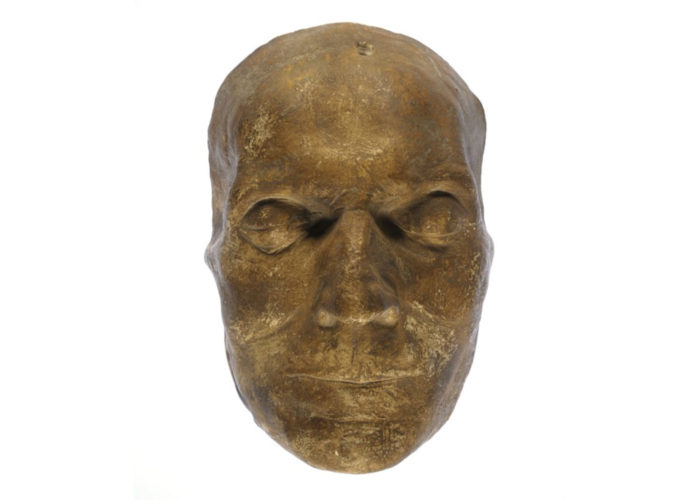James Hope’s Death Mask
Theme: Ireland's uprising (1798), War and the international order
This is the death mask of James Hope, a leading activist in the Society of United Irishmen. He is regarded today as having been the most egalitarian and socialist of the United Irishmen leadership.
James ‘Jemmy’ Hope was born in County Antrim in 1764. Heavily influenced by his Presbyterian faith and by the ideas of the American Revolution, in 1782 he joined the Irish Volunteer movement, which was initially raised to protect Ireland, but which progressively became more radical in its outlook and demands. In 1789 he marched with them to celebrate the taking of the Bastille and the start of the French Revolution.
When the Volunteers waned, James joined the newly formed United Irishmen, which sought the end of British rule and an independent Ireland. The authorities watched the growth of the United Irishmen with concern. On war being declared against France in 1793, they were declared illegal and they went underground.
In 1798 the United Irishmen led a major rebellion, hoping to begin a revolution in Ireland with the support of French troops. But under severe pressure from British military and civil measures, and divided on account of religion and geography, the leadership of the United Irishmen splintered, and the movement faltered – becoming more like a civil war in many places, as Irish loyalists joined in the suppression. Avoiding arrest, unlike many other leaders, James played a prominent part in the Battle of Antrim, holding up the victorious British forces and allowing the defeated United Irishmen to escape and go into hiding.
Despite a further attempt to rise up in 1803, the United Irishmen were ultimately unable to revive their cause. The protestant majority in the north had mostly changed its views, turning them into loyal supporters of the British Government and many former United Irishmen now filled the ranks of the British army. Hope remained on the run for a number of years, barely surviving and earning a pittance. Following a political amnesty in 1806 he moved back to Belfast, where he continued to work and support his family. His ideas about activism, equality and independence, though, remained inspirational to many Irish radicals, and his memoirs were published a year before his death in 1847.
This is a plaster copy of James Hope’s original death mask.
Did you know..?
Death masks were typically made for popular or notorious people whose remembrance was in the public interest, and had to be made within four hours of death to prevent features being altered by bloating.
Sources & acknowledgements
This object description and its related educational resources were researched and written by our team of historians and education specialists. For further information see the item’s home museum, gallery or archive, listed above.
-
Education overview
You can access a range of teachers resources related to this object and more on our education page.
Please also see our glossary of terms for more detailed explanations of the terms used.
-
Curatorial info
- Originating Museum: National Museums Northern Ireland
- Accession Number: BELUM.O496.1927
- Material: Plaster
- Original record
-
Use this image
- Rights Holder: © National Museums NI
- License Type: All Rights Reserved
Find it here
This object is in the collection of National Museums Northern Ireland



